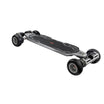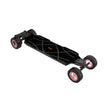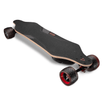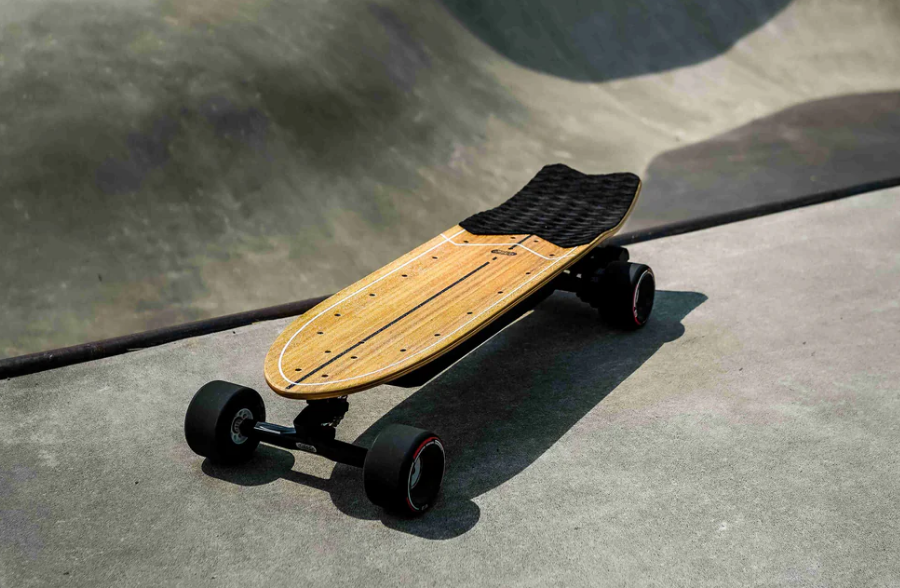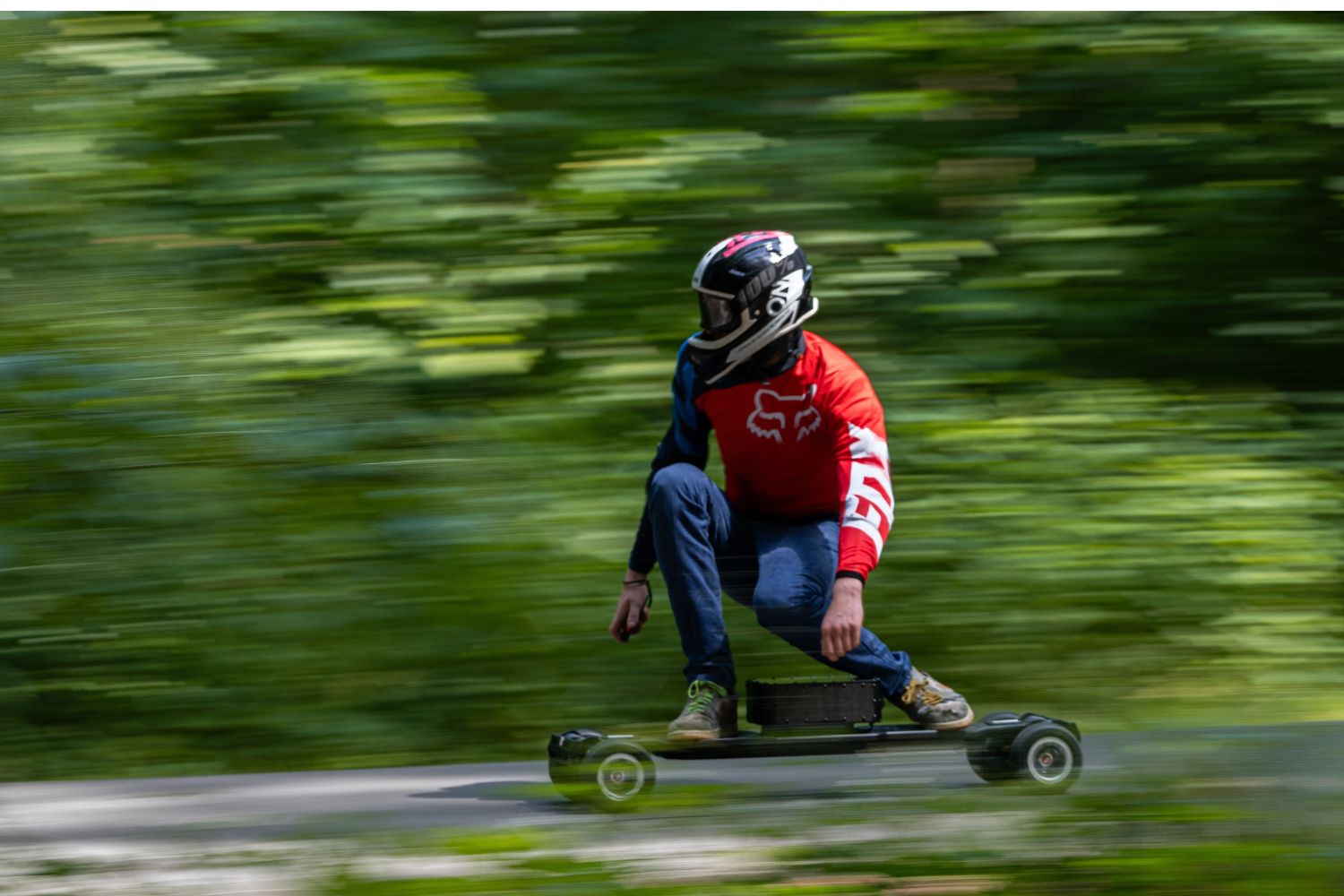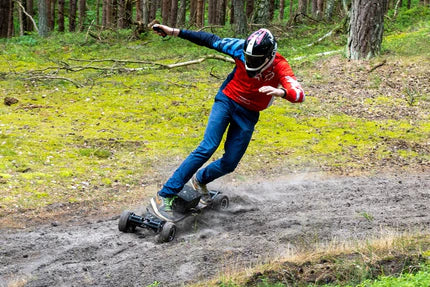Electric skateboards are a fun and easy way to get around or just enjoy some time outside. But with all this fun comes certain responsibilities that riders need to know about to stay safe and keep their boards in good shape. This blog will go over some common mistakes to avoid when you're riding an electric skateboard.
Ignoring Traffic Rules and Local Laws
One of the first things new riders should do is get to know the local laws about electric skateboards. For instance, different states in the U.S. have their own rules regarding where you can ride, speed limits, and whether you need to register your board. In California, electric skateboards can be used on roads with a speed limit of 35 mph or less, as well as on bike lanes, but not on sidewalks. The speed limit for riding is 15 mph. In contrast, New York City has stricter regulations. Here, electric skateboards are only legally allowed on private property, and riders should wear a helmet and follow safety guidelines. In Texas, electric skateboard laws vary by city.
Skateboarders are subject to the same traffic laws and stop signs as cyclists and drivers. Breaking these regulations might result in hazardous circumstances, such as crashes with cars or people, greatly raising the possibility of injury. Before driving, always be sure to review local regulations and maps.

Not Wearing Safety Gear
Many riders are unaware of the risks they may encounter while riding, so they choose not to wear protective gear. However, spills can happen to even seasoned riders. If you fall, wearing a helmet can definitely assist avoid serious head injuries. Knee and elbow protection are essential for protecting your joints, and wearing reflective clothing increases your visibility to others, particularly in low light. If riding without these protective gear, it may cause severe fractures, concussions, and other injuries.
Furthermore, donning safety gear not only keeps you safe but also encourages other motorcyclists to practice safety. People are inspired to wear helmets and pads when they witness others taking the time to do so, which promotes safety awareness and a healthy riding culture in the electric skateboards community.
Excessive Speed and Aggressive Maneuvers
Tricks on an electric skateboard are a lot of fun, and they can go really quickly. It's tempting to test your limits and see what you're capable of. But riding too fast can make you lose control more likely, particularly while turning or riding over uneven terrain. For instance, attempting a sudden turn while moving quickly could knock you off balance and cause you to tumble. Similar to this, braking quickly to avoid a pedestrian could cause your board to go out from under you and spill badly. So, while it's great to enjoy the thrill of riding, keep in mind that safety comes first. Don't forget to practice these movements in a safe area.
Overloading the Skateboard
The manufacturer has placed a maximum weight limit on every electric skateboard, and going above this limit may compromise both performance and safety. For instance, if your board is designed to support riders weighing 200 pounds, but you decide to carry a bulky bag filled with groceries, you may easily exceed the 220-pound restriction. The additional weight can slow you down and prolong the time it takes to stop, which is particularly dangerous when riding in an emergency. Carrying uneven weight can also throw off your balance. If one side is heavier, your board may feel unstable, especially when turning or hitting bumps. It's safer to ride if you use a backpack designed specifically for skateboarding to help keep your weight balanced.

Improper Riding Techniques
Common mistakes and how to avoid them
- Leaning forward or backward
How to avoid it: Stand with your feet shoulder-width apart and your center of gravity between your feet. Bend your knees slightly to adjust your center of gravity and absorb shock.
- Gripping too tightly
How to avoid it: Hold it easily and naturally, keeping your hands relaxed, so that you can control the direction of the board more flexibly.
- Lack of basic practice
- Incorrect posture
- Insufficient use of learning resources
Suggestion: Taking courses or watching instructional videos are effective ways to improve skills. With professional guidance, you can master the correct riding techniques more quickly and become a safer rider.
Riding with Low Battery
In addition to slowing you down, a low battery on your board can also result in unexpected power outages, which is quite risky. For instance, you run the risk of losing control and falling while riding downhill or in traffic, which could result in a collision with oncoming traffic or pedestrians. In addition, the board may behave erratically when the battery is low. It could be tougher for you to maneuver safely due to lower acceleration and longer response times. You might be trapped if you're far from home or a charging station, which would need you to push the board back or find another way to travel around.
To avoid these problems, it is crucial to choose a high-quality battery with a large capacity. Battery capacity, usually expressed in ampere-hours (Ah), directly determines the length of the battery life. When purchasing, you should choose the right battery capacity based on the distance and frequency of your riding. For example, if you plan to take long journeys or use the skateboard frequently, choosing a battery with a larger capacity will be very helpful.
The voltage of the battery is also a key factor affecting the performance of the electric skateboard. Higher voltage generally means more power output, which allows you to get better acceleration and climbing ability when you need it. However, high-voltage batteries may also make the operation of the skateboard more complicated, so when choosing, you also need to consider whether the control system of the electric skateboard is suitable.

Using the Wrong Terrain
Not every surface is appropriate for electric skateboards. Well-kept trails and smooth pavement make for ideal cyclist conditions. Riding in rocky, uneven, or difficult terrain can be dangerous. Your wheels may slip on gravel or sand, which could knock you off balance and raise the possibility of a fall. Similar to this, uneven terrain can cause unexpected jolts that could take you off unprepared. It's best to stay away from the area completely if you don't know the terrain. Slopes represent another scenario. Controlling your speed on steep inclines can be challenging, particularly for inexperienced riders. A quick descent can cause you to lose control of your brakes or find it difficult to stop properly, which can end in an accident. On the other hand, climbing steep hills can rapidly drain your battery and put extra strain on the motor.
Types of electric skateboards for different terrains
Urban flat roads
Standard electric skateboards: for flat surfaces such as sidewalks and park trails.
Rough and off-road terrain
All-terrain electric skateboards: with larger tires, powerful motors and a stable suspension system, they are suitable for dirt, trails, urban potholes, and even snow and slippery surfaces.
Riding in Unsafe Conditions
Wet, icy, or windy conditions can make riding unsafe. Slick surfaces from rain and snow can cause falls and make stopping more difficult. You risk losing your balance and having trouble steering in strong gusts. In order to stay safe, it's usually recommended that you wait for better weather before riding. Even on bright days, you should always be aware of potential risks such as potholes, debris, and sudden changes in the road. Riding at night is riskier, too. It's difficult to notice cracks and other road hazards in the dark, and you may run the risk of being overlooked by oncoming traffic. Make sure your skateboard has lights if you must ride after dark, and dress in bright or reflective materials to make yourself more visible to onlookers. To keep yourself safe, stay on well-lit paths and steer clear of unknown or dark regions.
Modifying the Board Without Knowledge
Never alter your skateboard without fully considering the consequences. Though they may appear harmless at first, DIY adjustments can significantly affect the board's balance and structure. Your board may handle entirely differently if the trucks are changed or the wheels are replaced, which may make it less stable and more difficult to manage. Also, making adjustments to your skateboard may cause the warranty to become void. You may be unable to acquire support from the manufacturer if something goes wrong as a result of your modifications. Prior to making any changes or upgrades to your board, it is imperative that you conduct extensive study. It will assist you in making informed decisions if you are aware of how various parts interact. Speaking with experts or seasoned riders also makes sure your upgrades are safer.
Failing to Plan Routes Ahead of Time
Route planning is essential for both convenience and safety. When you're setting out on a long ride and could become fatigued throughout the trip, knowing where you're going might help you spot potential risks, discover rest places, and find charging stations. In addition to improving your overall riding pleasure, these stops can assist in avoiding collisions. Route planning can be made easier by using navigation apps made specifically for skaters and cyclists. They can assist with distance tracking and show you bike-friendly routes.

Neglecting Maintenance
As a convenient means of transportation, proper maintenance of the electric skateboard can significantly extend its service life and ensure its safety. However, people often overlook some key maintenance details in daily use:- Tire and wheel inspection
- Braking system
- Battery Maintenance
- Cables and Connectors
- Rack and screw fastening
- Motor and transmission system
Prioritizing Safety for a Thrilling Electric Skateboard Ride!
A great experience starts with staying safe. Prioritizing safety allows you to fully unwind and enjoy the journey. Thus, when using your electric skateboards, commit to good habits, maintain your board properly, and pay attention to your surroundings. Enjoyment comes from knowing you're riding responsibly!














